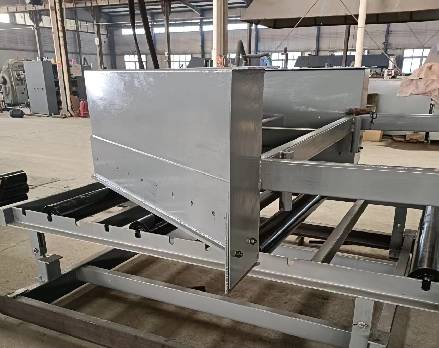 Afrikaans
Afrikaans  Albanian
Albanian  Amharic
Amharic  Arabic
Arabic  Armenian
Armenian  Azerbaijani
Azerbaijani  Basque
Basque  Belarusian
Belarusian  Bengali
Bengali  Bosnian
Bosnian  Bulgarian
Bulgarian  Catalan
Catalan  Cebuano
Cebuano  Corsican
Corsican  Croatian
Croatian  Czech
Czech  Danish
Danish  Dutch
Dutch  English
English  Esperanto
Esperanto  Estonian
Estonian  Finnish
Finnish  French
French  Frisian
Frisian  Galician
Galician  Georgian
Georgian  German
German  Greek
Greek  Gujarati
Gujarati  Haitian Creole
Haitian Creole  hausa
hausa  hawaiian
hawaiian  Hebrew
Hebrew  Hindi
Hindi  Miao
Miao  Hungarian
Hungarian  Icelandic
Icelandic  igbo
igbo  Indonesian
Indonesian  irish
irish  Italian
Italian  Japanese
Japanese  Javanese
Javanese  Kannada
Kannada  kazakh
kazakh  Khmer
Khmer  Rwandese
Rwandese  Korean
Korean  Kurdish
Kurdish  Kyrgyz
Kyrgyz  Lao
Lao  Latin
Latin  Latvian
Latvian  Lithuanian
Lithuanian  Luxembourgish
Luxembourgish  Macedonian
Macedonian  Malgashi
Malgashi  Malay
Malay  Malayalam
Malayalam  Maltese
Maltese  Maori
Maori  Marathi
Marathi  Mongolian
Mongolian  Myanmar
Myanmar  Nepali
Nepali  Norwegian
Norwegian  Norwegian
Norwegian  Occitan
Occitan  Pashto
Pashto  Persian
Persian  Polish
Polish  Portuguese
Portuguese  Punjabi
Punjabi  Romanian
Romanian  Russian
Russian  Samoan
Samoan  Scottish Gaelic
Scottish Gaelic  Serbian
Serbian  Sesotho
Sesotho  Shona
Shona  Sindhi
Sindhi  Sinhala
Sinhala  Slovak
Slovak  Slovenian
Slovenian  Somali
Somali  Spanish
Spanish  Sundanese
Sundanese  Swahili
Swahili  Swedish
Swedish  Tagalog
Tagalog  Tajik
Tajik  Tamil
Tamil  Tatar
Tatar  Telugu
Telugu  Thai
Thai  Turkish
Turkish  Turkmen
Turkmen  Ukrainian
Ukrainian  Urdu
Urdu  Uighur
Uighur  Uzbek
Uzbek  Vietnamese
Vietnamese  Welsh
Welsh  Bantu
Bantu  Yiddish
Yiddish  Yoruba
Yoruba  Zulu
Zulu conveyor head drum
The Essential Role of Conveyor Head Drums in Material Handling Systems
Conveyor systems are integral to the smooth operation of modern industries, aiding in the efficient movement of goods and materials across various sectors, from manufacturing to warehousing. At the heart of these conveyor systems lies a critical component known as the conveyor head drum.
What is a Conveyor Head Drum?
A conveyor head drum, sometimes referred to as a drive drum or head pulley, is a cylindrical device that plays a vital role in the functioning of a conveyor belt system. Positioned at the end of the conveyor, the head drum is where the belt is driven forward. As the motor turns the drum, it moves the belt along the conveyor pathway, allowing materials to be transported from one point to another seamlessly.
Key Functions of the Conveyor Head Drum
1. Drive Mechanism The primary function of the head drum is to act as a drive mechanism for the conveyor belt. Connected to a motor, the drum rotates and, through friction, propels the belt forward. This motion is essential for ensuring that materials are transported efficiently across varying distances.
2. Support and Alignment Beyond just driving the belt, the conveyor head drum also provides structural support. It helps maintain the alignment of the conveyor belt, preventing sagging and misalignment that could lead to material spills or damage to the system. Proper alignment is crucial for the longevity of the conveyor components.
3. Separation and Discharge The head drum can also be designed to facilitate the discharge of materials at the end of the conveyor line. By using various configurations, the drum can help direct materials into hoppers, bins, or other processing equipment. This separation mechanism reduces the risk of material congestion, enhancing the overall efficiency of the material handling process.
conveyor head drum

Design Considerations
When selecting a conveyor head drum, several design factors come into play. These include the drum’s diameter, width, material, and surface finish. The drum diameter is essential as it affects the belt tension and the overall system’s performance. Larger drums tend to reduce the belt tension required, whereas smaller drums may increase wear and tear on the belt.
The choice of material is equally important. Head drums are typically made from robust materials like steel or aluminum to withstand the stresses of continuous operation. Additionally, the surface finish can be textured or smooth, depending on the application. Textured surfaces provide better traction for the belt, reducing slippage and ensuring efficient material transport.
Maintenance and Efficiency
Regular maintenance of the conveyor head drum is crucial for ensuring optimal performance. This includes checking for wear and tear, ensuring proper lubrication, and monitoring the alignment of the drum and belt. Neglecting maintenance can lead to increased operational costs due to downtime, repairs, and replacements.
Efficiency in material handling is paramount for businesses, and the head drum plays a significant role in achieving this. A well-functioning head drum minimizes energy consumption and enhances the speed of operations. Implementing advanced technologies, such as condition monitoring systems, can also provide real-time data on the drum's performance, helping to predict and prevent potential failures.
Conclusion
In conclusion, the conveyor head drum is a critical component of conveyor systems, playing multiple roles in supporting, driving, and discharging materials. As industries continue to evolve and demand greater efficiency, the importance of reliable and well-designed head drums cannot be overstated. By focusing on design considerations, regular maintenance, and advancements in technology, businesses can harness the full potential of their conveyor systems, ensuring smooth and efficient operations for years to come. With these systems being a backbone of material handling, the conveyor head drum stands out as a true unsung hero in modern manufacturing and logistics.
-
Trusted Conveyor Solutions from Leading Conveyor Idler Roller ManufacturersNewsJun.27,2025
-
Reliable Return Idler Solutions for Efficient Belt Conveyor SystemsNewsJun.27,2025
-
Precision Conveyor Accessories for Streamlined Material HandlingNewsJun.27,2025
-
High-Quality Belt Conveyor Idler Solutions for Efficient Material HandlingNewsJun.27,2025
-
High-Performance Belt Conveyor Pulleys for Reliable Material HandlingNewsJun.27,2025
-
Enhancing Material Handling EfficiencyNewsJun.27,2025





























